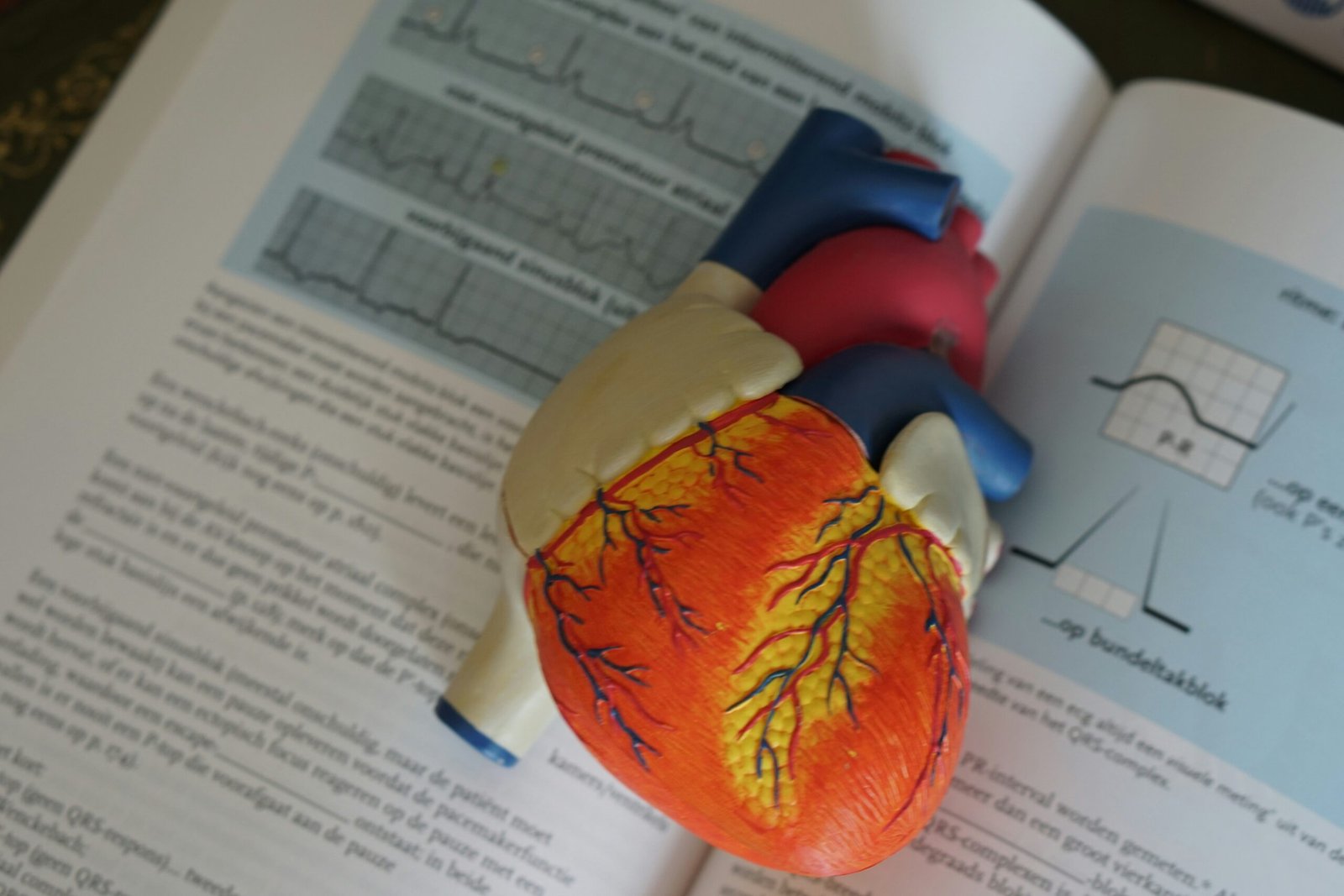Unlocking the Secrets to Cardiac Health and Achieving Your VO2 Max Goals
Understanding the Importance of Cardiac Health
Cardiac health plays an indispensable role in overall well-being, fundamentally affecting our body’s efficiency at circulating blood, oxygen, and nutrients. A healthy heart ensures that these essential elements reach various tissues and organs, thereby optimizing bodily functions and enhancing the quality of life. Conversely, compromised cardiac health can lead to grave conditions such as heart attacks, strokes, and hypertension, underscoring the necessity for proactive heart care.
Several factors negatively impact cardiac health, with poor diet, sedentary lifestyle, and smoking positioned as primary culprits. Diets rich in saturated fats, trans fats, and sugars contribute to the narrowing and hardening of arteries. Similarly, physical inactivity diminishes cardiovascular efficiency, leading to heightened risks of developing heart conditions. Smoking, a severe detriment to cardiac health, introduces harmful chemicals into the bloodstream, which damage arterial walls and augment the likelihood of clots. Collectively, these factors disrupt the heart’s ability to function optimally, precipitating adverse health outcomes.
Maintaining good cardiac health brings a wealth of benefits, prominently including enhanced physical fitness, mental clarity, and longevity. Regular cardiovascular exercise, balanced nutrition, and abstaining from smoking fortify the heart, making it more adept at pumping blood efficiently. This improved circulatory capability spurs better oxygenation and nutrient distribution, positively impacting physical stamina and cognitive function. Additionally, a robust heart reduces the wear and tear on the vascular system, contributing to a longer, healthier life.
In essence, fostering cardiac health is pivotal not just for mitigating disease risks but also for achieving a well-rounded, vibrant life. By adopting heart-healthy habits, individuals can enjoy augmented physical endurance, sharper mental acuity, and a greater likelihood of extended vitality. Understanding and prioritizing cardiac health is the cornerstone of a wholesome, enduring well-being.
What is Zone 6 VO2 Max?
Zone 6 VO2 Max is a specialized high-intensity training zone specifically designed to push an individual’s aerobic capacity to its limits. Understanding VO2 Max is crucial here; it denotes the maximum rate at which oxygen is consumed during progressive exercise and serves as a key indicator of cardiovascular fitness. VO2 Max measures how efficiently your body can transport and utilize oxygen during intense physical activity, making it an indispensable metric for evaluating endurance and performance.
When discussing Zone 6 VO2 Max, we’re referring to the upper echelon of exercise intensity, typically ranging from 90-100% of an individual’s maximum heart rate. Training in Zone 6 is not for the faint-hearted. It’s a strenuous effort that demands peak athletic capability but promises significant rewards in return. This zone is often utilized by athletes aiming to elevate their performance levels significantly.
One of the primary benefits of engaging in Zone 6 training involves the physiological adaptations that occur within the body. Regularly pushing your cardiovascular system to this limit can lead to increased mitochondrial density. Mitochondria, often referred to as the powerhouse of cells, are integral to aerobic energy production. An increase in their density enhances your muscle cells’ ability to generate energy efficiently, thereby boosting endurance.
Another substantial benefit of Zone 6 training is the improvement in lactate threshold. Typically, during high-intensity exercise, lactate accumulates in the muscles faster than it can be cleared, leading to fatigue. However, training at such an intensive level helps the body adapt by delaying the onset of lactate accumulation. This allows athletes to sustain higher levels of exertion for more extended periods, thereby extending their performance capabilities.
In summary, Zone 6 VO2 Max training is an advanced, high-intensity workout protocol aimed at pushing one’s aerobic capacity and cardiovascular fitness to optimal levels. It provides significant physiological benefits such as increased mitochondrial density and improved lactate threshold, making it an essential tool for athletes striving to enhance their endurance and overall performance.
Best Workouts to Achieve VO2 Max
Understanding the best workouts for enhancing VO2 Max is essential for anyone looking to optimize their cardiac health and athletic performance. A primary approach to boosting VO2 Max is through high-intensity interval training (HIIT). HIIT workouts are designed to push your cardiovascular system to its maximum limit in short, intense bursts, followed by periods of low activity or rest. This style of training can significantly enhance your body’s ability to transport and use oxygen. Effective exercises under this umbrella include sprint intervals, where a runner alternates between periods of all-out sprints and slower recovery runs, and cycling at high resistance, which demands intense exertion followed by lighter pedaling.
Another crucial component of HIIT targeted workouts is plyometric drills. Plyometric exercises, such as jump squats and box jumps, are explosive movements that challenge the cardiovascular system and train muscles to exert maximum force in short intervals. These moves not only build strength and agility but also contribute significantly to VO2 Max improvement.
Progressive overload is a pivotal concept within these workouts. It involves gradually increasing the demands placed on your body to keep challenging your cardiovascular system, thus fostering improvements in VO2 Max. This can be achieved by progressively raising the intensity, duration, or frequency of your workouts. For instance, if you’re accustomed to sprinting for 30 seconds, you might extend that sprint to 45 seconds or increase the overall number of sprinting cycles in a session over time.
In addition to HIIT, endurance training also plays a vital role in achieving VO2 Max goals. Activities such as long-distance running, swimming, or cycling help build cardiovascular endurance over time. These sessions, typically performed at a steady-state intensity, complement the high-intensity nature of interval training by enhancing the heart’s efficiency in pumping blood and improving overall aerobic capacity.
Combining high-intensity and endurance workouts yields the most effective results for VO2 Max improvement. The interplay between the two forms of training ensures comprehensive cardiovascular conditioning, elevating both your immediate oxygen intake and long-term heart health. Incorporating a diverse array of these workouts into your regimen can unlock the secrets to achieving superior cardiac function and reaching your VO2 Max goals.
Practical Tips for Maintaining and Monitoring Cardiac Health
Maintaining and monitoring cardiac health is crucial, especially when working toward achieving VO2 Max goals. A comprehensive approach to cardiac care involves several key components, beginning with consistent cardiovascular exercise. Engaging in regular physical activity, such as brisk walking, running, cycling, or swimming, can significantly improve heart function and endurance. The American Heart Association recommends at least 150 minutes of moderate-intensity aerobic exercise per week for optimal heart health.
Another cornerstone of cardiac health is a balanced diet. Prioritize a diet rich in heart-healthy nutrients, such as fruits, vegetables, whole grains, lean proteins, and healthy fats. Foods high in omega-3 fatty acids, like salmon, flaxseeds, and walnuts, are particularly beneficial for heart health. Limiting the intake of saturated fats, trans fats, sodium, and added sugars can also help maintain a healthy cardiovascular system.
Hydration plays a vital role in supporting cardiac function. Proper hydration helps maintain blood volume, ensuring that your heart can effectively pump blood throughout your body. Aim to drink plenty of water throughout the day, particularly before, during, and after exercise sessions.
Regular medical check-ups are essential for monitoring cardiac health. Periodic visits to your healthcare provider can help detect potential issues early. Key metrics to keep an eye on include heart rate variability and blood pressure. Measuring these parameters regularly can provide valuable insights into your heart’s condition and how it’s responding to your training regimen.
Recognizing the signs of overtraining is also crucial. Symptoms like prolonged fatigue, muscle soreness, decreased performance, and a higher resting heart rate may indicate that your body needs rest. Incorporating rest and recovery days into your fitness routine is vital for preventing injuries and allowing your heart and muscles to recuperate.
Lastly, the use of wearable fitness technology can be a game-changer for tracking your progress and making necessary adjustments to your workouts. Devices such as smartwatches and fitness trackers can monitor your heart rate, track your activity levels, and even offer insights into your sleep patterns, assisting you in achieving your VO2 Max objectives and maintaining robust cardiac health.
These are some of the pieces of equipment that will help you attain your zone 6 goals: https://amzn.to/3AQPztH https://amzn.to/3XbsucN https://amzn.to/3XxoVz8 https://amzn.to/4eeHn55



